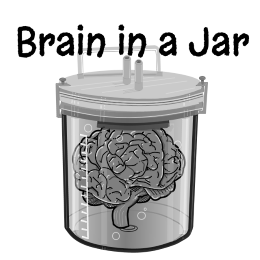Trending
Opinion: How will Project 2025 impact game developers?
The Heritage Foundation's manifesto for the possible next administration could do great harm to many, including large portions of the game development community.

Featured Blog | This community-written post highlights the best of what the game industry has to offer. Read more like it on the Game Developer Blogs or learn how to Submit Your Own Blog Post
There are two brains, at least, in our heads. They operate as two distinct systems with different features and abilities. Well-designed games engage both systems effectively.


Thanks to a progressive, genetic disease, I can only work from home now. I am reduced to being like a brain in a jar, that you can only communicate with electronically. I won't be around forever, so I want to share some thoughts and observations about our industry, collected over the years.
The format here is simple: an abstract for the TL:DR crowd, followed by one item per post. I will keep them concise, to protect our time.
I will mostly write on human issues, like gray gaming, business issues, like in-game economies, and technical issues, like behaviorism and the brain. Since brain is in the title, let’s start with a riff on the gaming brain.
There are two brains, at least, in our heads. They operate as two distinct systems with different features and abilities. Well-designed games engage both systems effectively.
.png/?width=200&auto=webp&quality=80&disable=upscale)
Philosophers tell us that duality is built into our hardware. Our dual hemisphere, bicameral brain insures we see dichotomy, the Tao, Hegelian dialectics, the nouns and verbs of language and the equivalence in algebra.
Let’s avoid considering our own hardware further today. We don’t need to settle the discussion about which two brains, left and right, upper and lower, old and new, fore and rear, are the important ones. We only need to talk about the 2 layers of software running on that complex machine.
System one is ancient and animal. It is fast, parallel, low cost and wired directly to our senses and limbs. Though quick and cheap, it knows no real logic and no real language. It memorizes patterns and habits. It can be fast because it does not need to think, only react to stimuli. It can be taught to salivate for a sound. It is so fast, we have measured it making a decision a half-second before we are aware that a decision has been made.
System two is modern and human. It is a layer of abstraction above the animal. It is the executive. It plans, analyzes, predicts and communicates. It is as social and empathetic as it is slow and serial. It can innovate and create. It is expensive to operate however, running through fuel like a hot-rodded engine.
When we first launch a brand-new game, system two operates the mouse or controller. We’re slow and clumsy. We must think about how to jump or heal or crouch. Gradually, that knowledge is pushed down to system one, as automatic reactions to stimuli. We soon game-walk as naturally as we real-walk. That frees system two, the thinker, to do more important things. Game makers need to design for this system dynamic purposefully, not accidentally.
There is a point, according to the Yerkes-Dodson Law, where the two systems become disconnected. We like arousal and we like to perform and games provide both. The screen and speakers provide arousal while we are tasked with performing actions. As arousal increases, overcoming boredom, we perform better and better. We like a little challenge. The more the merrier, but only up to a point.

When arousal outruns one’s ability to perform, system two is left behind. When speed and difficulty become too great for the executive brain, we’re left with only animal reactions. Some games, like some shooters, live at the edge of this breakdown point. It is a tricky proposition, because we’re all different and have different capacity for arousal and response. Too many games turn people (and money) away by exceeding beginners’ optimum performance, early on when too much system two is still required to think about what they are doing. You can lead them to get better, but not all at once.
Though we have a kind of closely held morality about the purity and value of difficulty, it is a false religion. In fact, many games have an unintended, reverse difficulty problem where a beginner without levels, buffs and gear faces more difficult gameplay than a veteran, with a top tier build, no matter what your spread sheet says. If all the fun is in your elder game, beware. Your difficulty curve is probably wrong.
The obvious answer here, is to measure performance as difficulty and arousal increase. When performance falls off, you’ve found the edge for a given player or team. With that system, we can dynamically modulate difficulty to climb from somewhere above boredom, rising to just at or beyond the breakdown point, minute by minute, across a whole unit of content, like a level, map or chapter.
So, let players have their own fun, without enforcing your fun. Let them have their difficulty, not fixed levels based on all the expert players at your studio. Don’t think punishing some players for a lack of natural gifts is moral. Insure that you are welcoming your customers, not unconsciously competing with them, like your system one mind will try to do. We’re game makers and sellers, not judges or priests.
Read more about:
Featured BlogsYou May Also Like